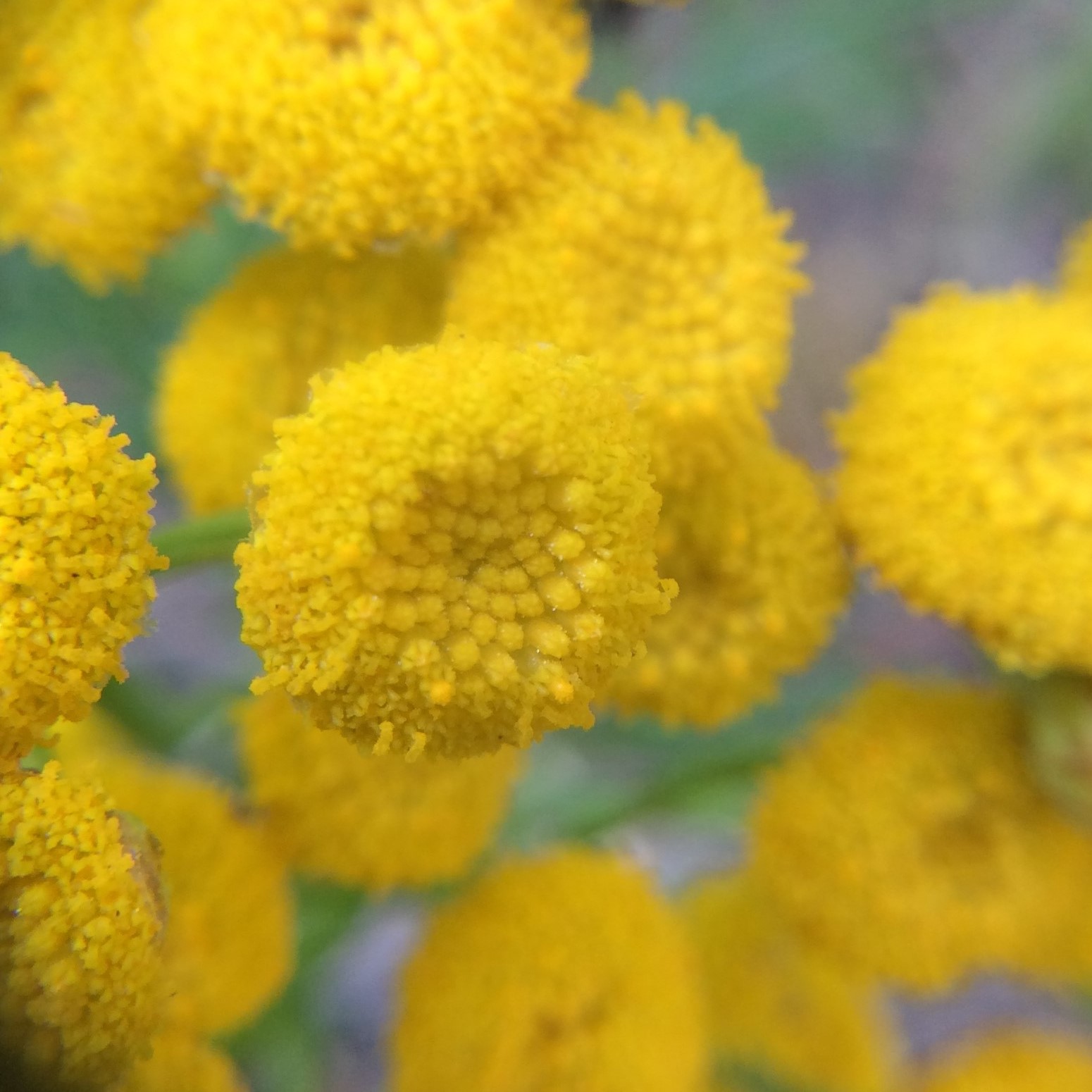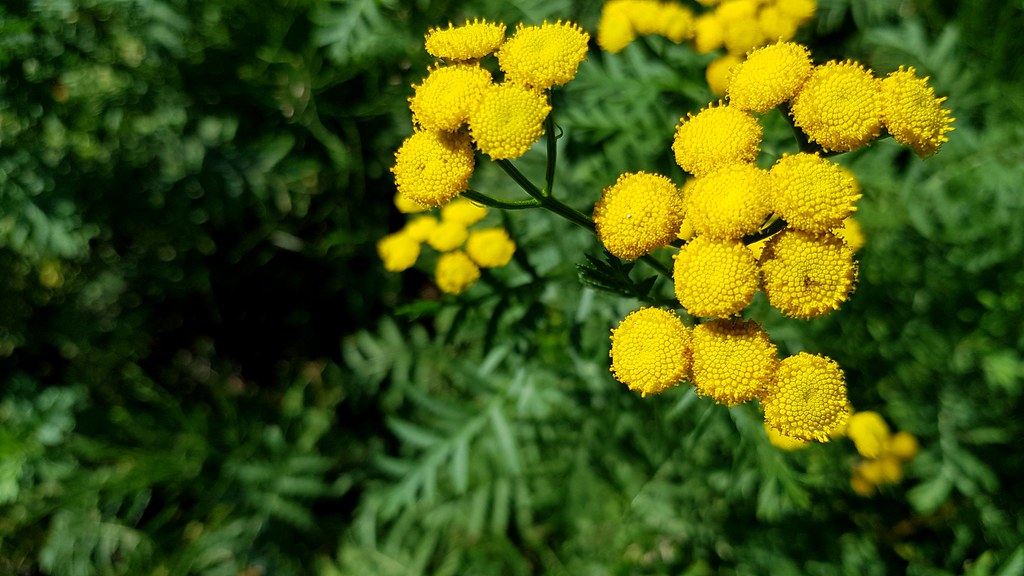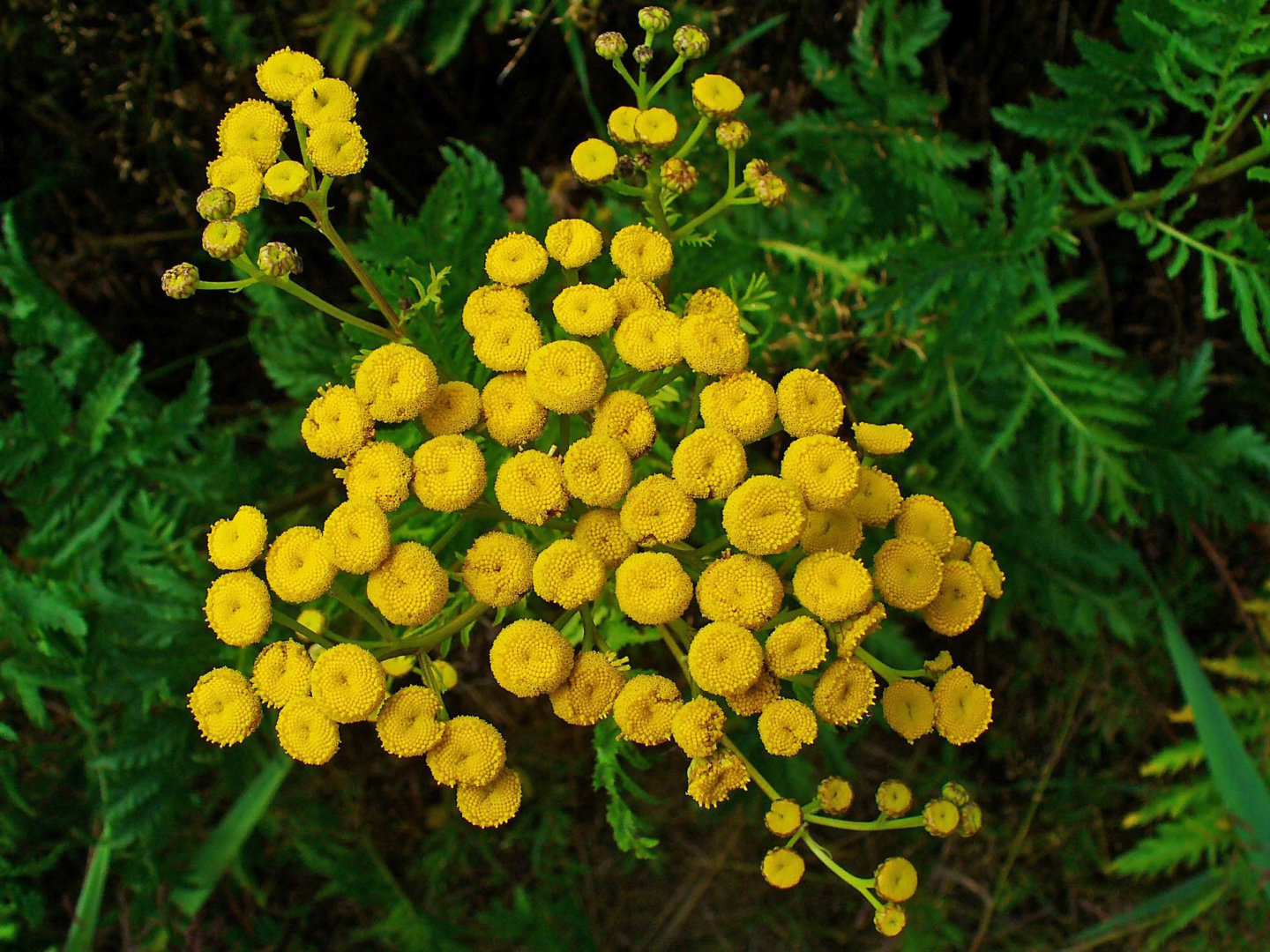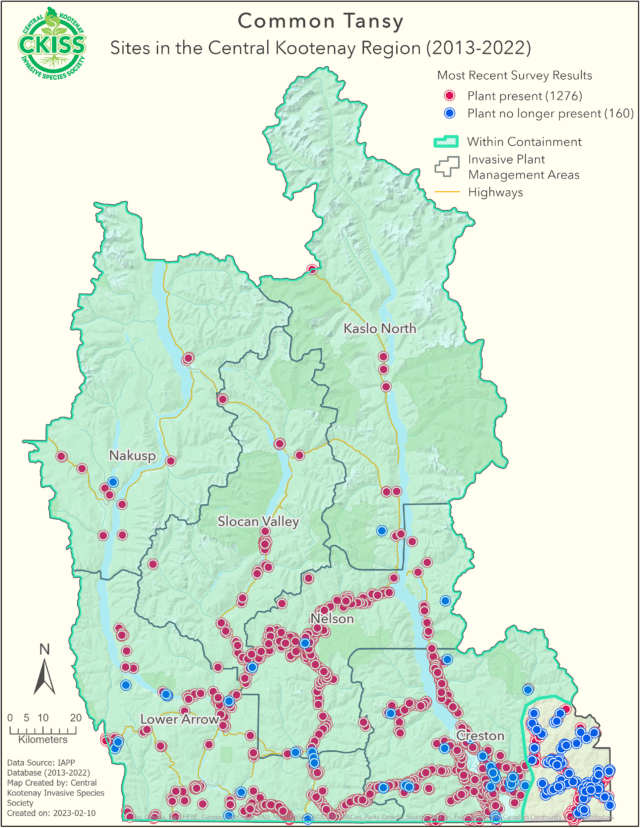Tanacetum vulgare
Identification

- Bright yellow flowers grow in clusters of 20 – 200 heads.
- Grows up to 1.8 m tall and can form dense patches.
- Leaves are pinnately divided with serrated leaflets.
- Grows in full sun.
- Commonly grows on roadsides, pastures, and industrial areas.
- Stems can be green, purple, or red and may appear spotted.
Introduction and spread
- Native to Eastern Europe and Eurasia
- Now grows across Canada, the USA, Australia, and New Zealand.
- It is believed that this plant was originally grown in Canada as an ornamental, and escaped cultivation.
- Each plant can produce over 2000 seeds and these seeds can remain viable in the soil for over 25 years.
Consequences of invasion
- Common tansy is poisonous to livestock and negatively impacts flavour of dairy.
- Reduces plant diversity in ecosystems that it invades, which impacts other types of biodiversity.
- Invades pastures and hay producing fields, which can have economic impacts.
- Can cause skin irritation.
Status in the CKISS region
- Common tansy is widespread across the CKISS region, so it is classified as Strategic Control on the CKISS Annual Priority List.
- However, parts of the Creston Invasive Plant Management Area do not have established populations of common tansy, so efforts are made to Contain current infestations there.
- While it is not realistic to eradicate this species at the landscape level, this species may be treated at high priority sites (e.g. wildlife habitat, corridors of spread, adjacent to agricultural land, restoration sites, etc.) based on specific land management objectives.
- To learn more about how CKISS classifies and manages invasive species, see our Invasive Species Priority Lists page.
Integrated pest management options
Prevention
- Spreads mainly through seeds, so preventing seed production and dispersal is key.
- Prevent an existing infestation from spreading by ensuring that tools, equipment, and vehicles are free of seeds after working or playing in an infested area.
- Be PlantWise and use the Grow Me Instead brochure to avoid spreading or planting common tansy.
Mechanical control
- Hand pulling, wearing gloves, can be effective for small infestations. Keep in mind that the seed bank remains viable for many years so this would be a multi-year process.
- Mowing before July may be effective, but a single mowing per year is not thought to be effective.
Biocontrol
- No biocontrol agent for this plant is currently available in BC.
Chemical control
- Chemical control may be an option. Consult a professional to determine whether this option is right for you.
Additional resources



